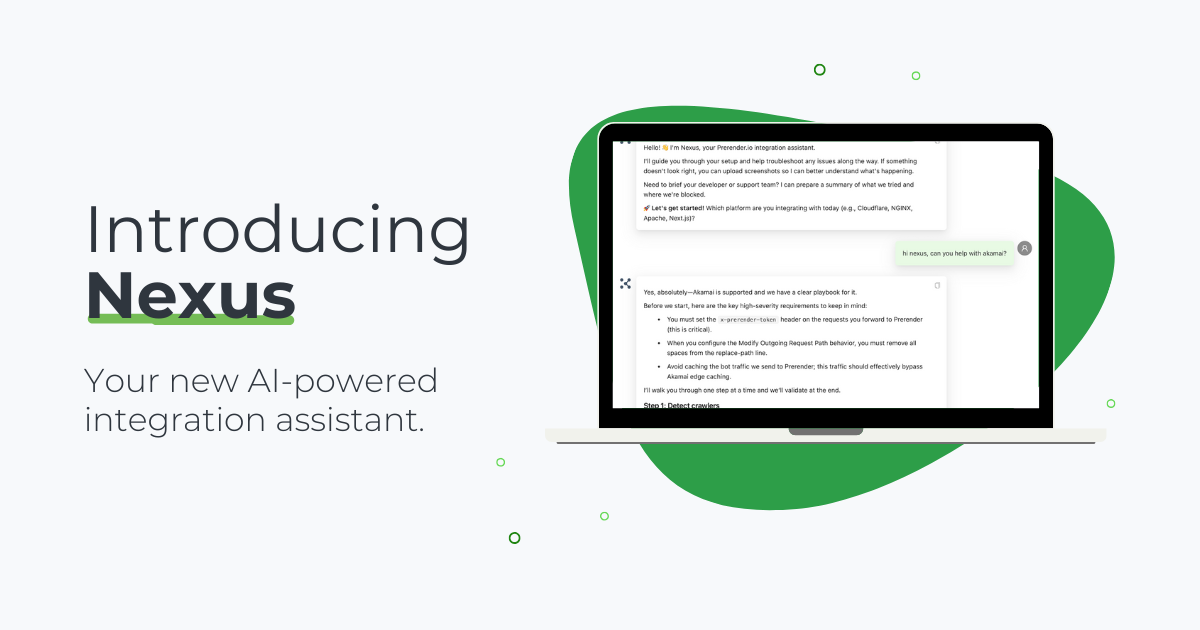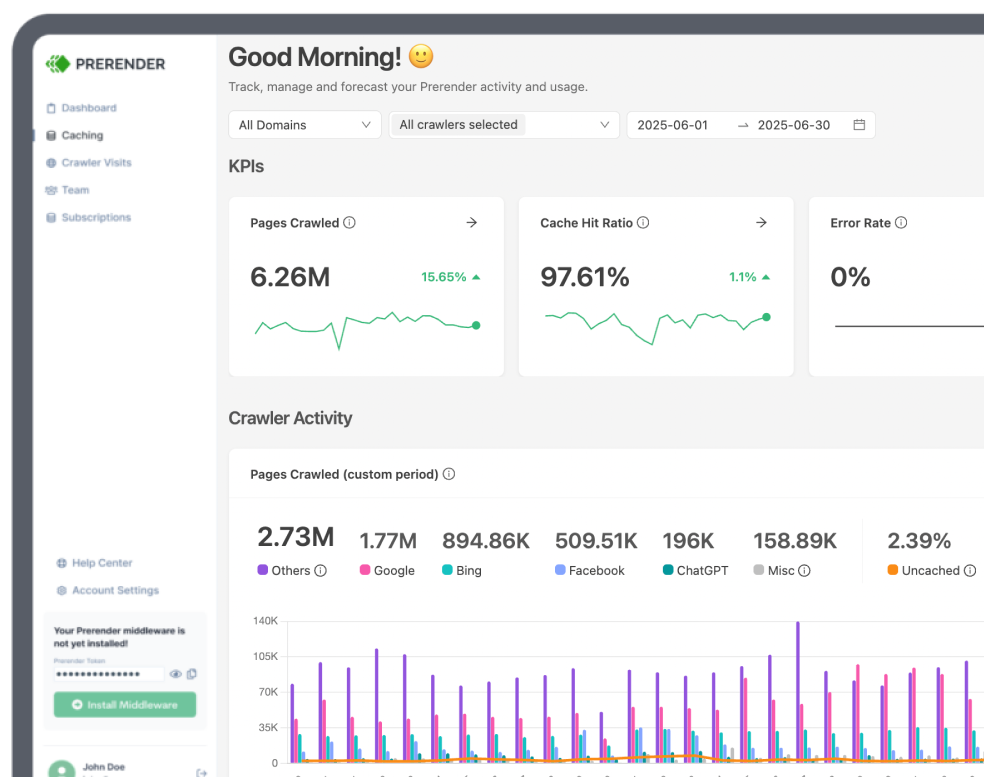Faceted navigation lets ecommerce shoppers filter and sort products by various product attributes. While it makes the shopping experience much more personalized and enjoyable, it can pose significant ecommerce SEO challenges when not managed properly.
In this article, we’ll explore the double-edged nature of faceted navigation for online shops, highlighting its pros and cons. We’ll also discuss how you can mitigate its negative impact on SEO, specifically through pre-rendering tools for ecommerce like Prerender.io.
What is Faceted Navigation for Ecommerce Websites?
Faceted navigation, also known as faceted search, is a powerful tool that empowers shoppers to refine search results through multiple filters or facets.
Faceted navigation significantly enhances the online shopping experience by allowing customers to quickly narrow down product options based on specific attributes like color, size, or price.
Faceted navigation is usually located on the sidebar or at the top of product category pages, as seen in the examples below.
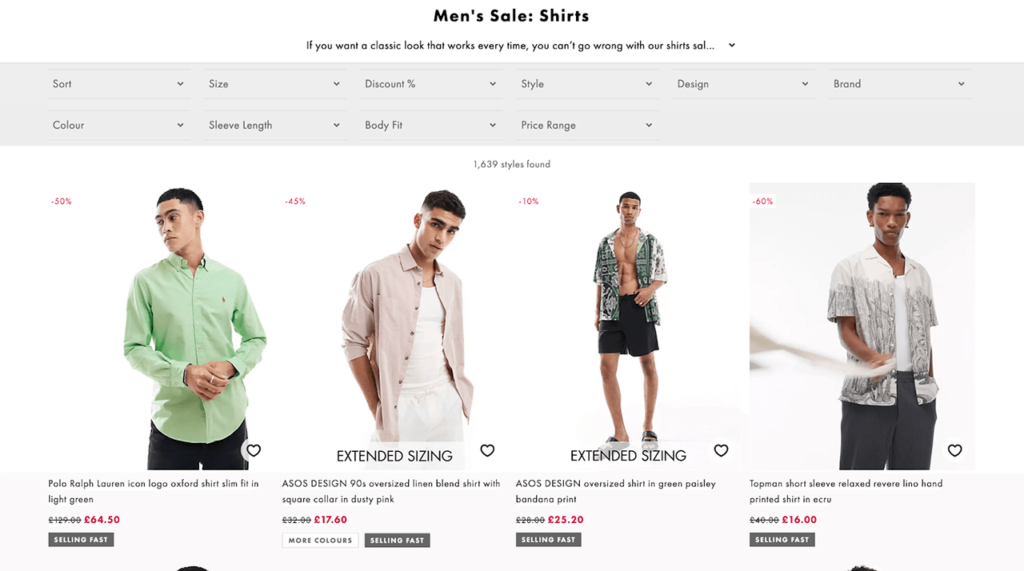
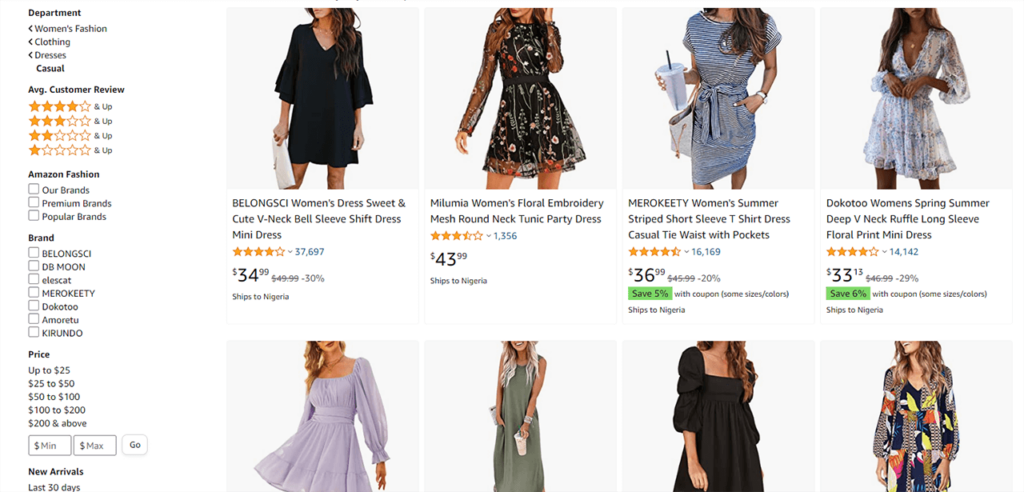
Related: Check out other types of product page navigation, such as internal and search navigation, to optimize and keep ecommerce visitors engaged.
5 Benefits of Implementing Faceted Navigation on Retail Sites
As one of the common ecommerce navigation, faceted navigation offers numerous advantages for both businesses and users. Let’s look at some of them.
1. Enhances User Experience and Conversion Rates Through Filtering Options
Shoppers visiting an online store with a specific product in mind expect a swift and easy buying journey. Simplifying this process can significantly boost sales and conversion rates. Faceted navigation is a powerful tool for achieving this. By allowing customers to filter quickly and sort products, it empowers them to find their desired item efficiently, enhancing their overall shopping experience.
2. Improves Product Discoverability
Unlike an internal search system, faceted navigation relieves shoppers from the burden of guessing the right keywords to search for a specific product. Instead, they can use available filters to find what they need.
Additionally, faceted navigation can outline some item attributes shoppers might want to consider when choosing the right product and offer suggestions on their search.
3. Personalizes and Customizes Individual Preferences
According to Epsilon, 80% of customers prefer to buy from brands that offer personalized shopping experiences.
Faceted navigation gives shoppers the power to customize their search journey based on what matters most to them. Looking for clothing options in a particular color? You can filter for that. Need to stay within a specific budget? Just set the price range, and you’re good to go.
This level of personalization makes your shoppers feel valued and understood, which, in turn, sets your online store apart.
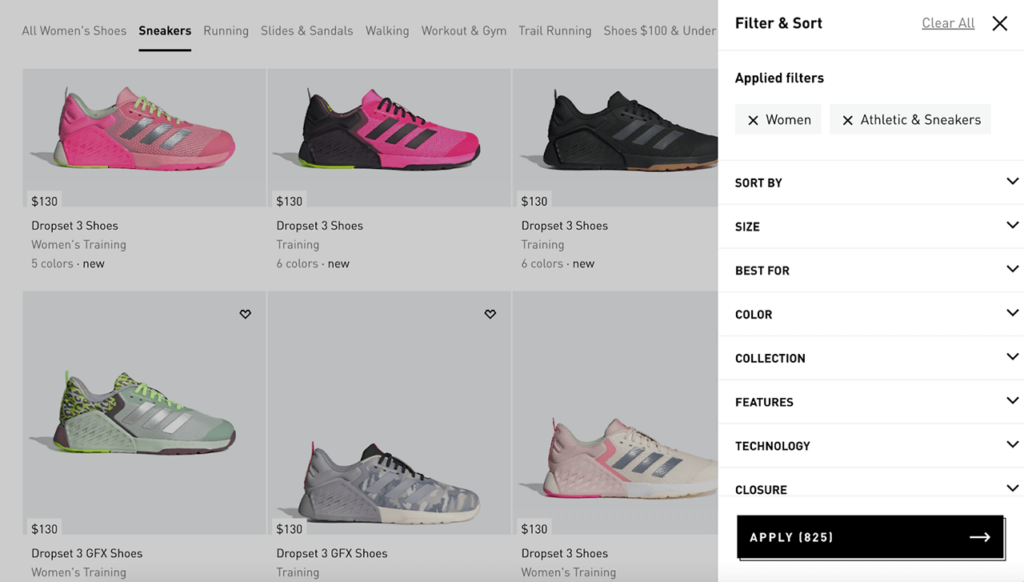
4. Boosts SEO Through Internal Linking and Indexable Filters
Well-implemented faceted navigation can improve internal linking by creating logical, structured paths for search engines to follow. When specific filtered pages are indexed properly, they can rank for long-tail search queries that match user intent. For example, an indexed page for “men’s running shoes under $100” can attract shoppers searching for that exact product category.
To ensure SEO-friendly faceted navigation, retailers can optimize selected filtered pages for indexing while blocking low-value variations to prevent duplicate content.
5. Supports Better Data Collection and Insights
Faceted navigation provides valuable data on customer preferences and behavior. By analyzing which filters shoppers use most frequently—such as price ranges, colors, or product features—retailers can gain insights into demand trends. This information can help optimize product offerings, adjust marketing strategies, and personalize future shopping experiences.
Additionally, tracking interactions with facets can highlight potential UX improvements, such as which filters might need better visibility or which attributes shoppers struggle to find.
The SEO Challenges of Faceted Navigation for Ecommerce Businesses
Many SEO issues with faceted navigation stem from URL parameters. In faceted search, these parameters are additional pieces of information added to the end of a URL to tell the server how to handle a request.
For example, in this URL:
The parameters “category=shoes” “sort=price_asc” “page=2” may provide users with specific results based on their selected filters, but they also create many possible URL combinations with similar content. Consequently, this can result in several SEO issues, such as the following.
A. Duplicate Content and Diluted Authority
One of the major headaches with faceted navigation is duplicate content. Different filters and facets can generate multiple URLs displaying similar or identical content. This can hurt your ecommerce SEO because search engines may view them as duplicate content, not knowing which version to prioritize.
Furthermore, duplicate content often leads to the dilution of your ranking signals. In a worst-case scenario, search engines may deindex your pages.
Related: Follow these 6 recovery steps if your ecommerce product page got deindexed by Google.
B. Potential for Keyword Cannibalization
When multiple pages targeting the same keyword due to different faceted combinations exist, they compete against each other. Instead of having one strong page that ranks well, you have several weaker ones that struggle to make an impact.
This spreads your link equity thin across the duplicate pages and can confuse search engines about which page to rank for specific queries, ultimately hurting your ecommerce SEO performance.
C. Wasted Crawl Budget
Search engines allocate a certain amount of resources to crawl and index each site, known as the crawl budget. With faceted navigation creating numerous URL variations, search engines can waste that budget and time crawling these redundant pages instead of indexing more valuable ones.
Pro tip: Learn how to guide Google crawls specific URLs in your retail site.
D. Index Bloating
Depending on the size of your online store, hundreds or even thousands of extra URLs caused by faceted navigation can lead to index bloating.
For example, your site has 15,000 essential pages, but Google Search Console shows almost 40,000 pages indexed. This indicates that Google’s index is filled with numerous low-value pages.
Having so many low-quality pages indexed can slow down your site and hurt the user experience, making it harder for search engines to find and rank the pages that matter most.
Faceted Navigation Best Practices
While faceted navigation presents SEO challenges, the right approach can help you maximize its benefits while minimizing risks. Implementing best practices ensures your navigation remains user-friendly and search-engine-friendly.
- Use robots.txt directives wisely: blocking unnecessary faceted pages or specific parameter-based URLs can prevent search engines from crawling and indexing redundant variations.
- Display result counts for facets: this helps users avoid applying filters that lead to empty pages. Google also suggests graying out unavailable options to streamline the shopping experience.
- Optimize for all devices: ensure your faceted navigation works well on both desktop and mobile. Consider collapsible menus to simplify filtering on smaller screens.
- Structure facet values logically: alphabetizing brand facets or grouping similar attributes makes navigation more intuitive.
- Use AJAX for better performance: AJAX enables dynamic filtering without requiring a full-page reload, improving user experience and page speed.
By applying these best practices, you can strike a balance between providing a smooth shopping experience and maintaining strong SEO performance. However, even with these optimizations, faceted navigation can still create indexing challenges. That’s where pre-rendering comes in.
Combat Faceted Navigation SEO Challenges with Content Pre-rendering
We’ve established that faceted navigation can be a real headache for SEO. So, how do you tackle these issues effectively?
Most modern ecommerce sites rely on JavaScript (JS) frameworks to create dynamic, interactive user experiences. However, JS introduces SEO challenges similar to that of faceted navigation, including difficulties with indexing dynamic content.
One way to tackle these SEO challenges is to use technical SEO tactics like canonical tags, no-index tags, and robots.txt directives. But this needs constant monitoring and maintenance, especially as your ecommerce product catalog evolves. Fortunately, there’s a more practical approach: pre-rendering.
Pre-rendering involves pre-loading and rendering web pages before they are requested by crawlers or human users (or on the fly). This benefits sites with complex navigation systems like faceted navigation. It ensures that search engines get a fully rendered page that can easily be crawled and indexed.
Here’s a breakdown of how pre-rendering works and why it’s effective:
- Server-Sider Rendering (SSR): SSR generates HTML on the server, ensuring that search engines can easily crawl and index your pages.
- Static Site Generation (SSG): SSG pre-builds the entire site into static files at build time, reducing the need for JavaScript execution during crawling.
- SEO tags: pre-rendered pages should include essential SEO elements, such as meta tags and structured data, to help search engines understand and rank your content.
While you can build your own pre-rendering system, it can be costly and time-consuming. You may spend $120k+ and countless development hours. For a more affordable and practical solution, try Prerender.io.
By using a prerendering tool for ecommerce like Prerender.io, you can still achieve your desired indexing results without extensive development cost and effort.
Prerender.io renders your Javascript content ahead of time and feeds a static version to crawlers—averaging a response time of just 0.03 seconds. This drastically improves your site’s server response times, creating a seamless experience for bots and human visitors.
Related: See how much money you can save by choosing Prerender.io over building your own SSR.
Improve Your Ecommerce Site Experience with Prerender.io
There’s no denying the immense user experience advantages of faceted navigation for ecommerce sites, especially those with large product catalogs. It is essential to be aware of potential ecommerce SEO issues and stay ahead of these challenges with a pre-rendering solution in place.
After all, the ecommerce world is evolving, and only those who adapt and innovate can come out on top. So, what are you waiting for? Get crawled, indexed, and found with Prerender.io.
If you want to know about ecommerce SEO optimization, these resources are at your service:
- Product Page Optimization for SEO, Conversion Rates, and UX
- 5 Ways to Maximize Crawling and Get Indexed
- 5 Common Mistakes on Javascript Ecommerce Websites
FAQs About Faceted Navigation for Ecommerce SEO
1. How Can You Make Faceted Navigation SEO-Friendly?
To ensure faceted navigation is SEO-friendly, you need to carefully manage how search engines crawl and index your faceted pages. Here are some key strategies:
- Use canonical tags to signal the preferred version of a page when multiple faceted variations exist. This helps prevent duplicate content issues.
- Implement “noindex” tags for faceted pages that don’t add unique value, preventing them from being indexed by search engines.
- Block unnecessary pages using robots.txt, particularly those with URL parameters that don’t provide unique search value.
- Leverage AJAX-based filtering to allow users to refine searches without generating new URLs, reducing unnecessary indexable pages.
- Optimize internal linking to guide search engine crawlers toward the most valuable, indexable pages.
2. How Do Search Engines Handle Faceted Navigation?
Search engines, especially Google, use advanced crawling algorithms to interpret faceted navigation. However, if faceted navigation is not managed correctly, search engines may struggle due to excessive URL variations, which can lead to issues like duplicate content, wasted crawl budget, and keyword cannibalization.
To manage faceted navigation effectively, Google offers guidelines such as using canonical tags, implementing robots.txt directives, and applying “noindex” attributes to control indexing. Tools like Google Search Console can also help site owners monitor how Googlebot crawls faceted pages.
3. What Are the Best Ways to Structure Faceted Navigation for Large Ecommerce Sites?
For large ecommerce sites with extensive product catalogs, well-structured faceted navigation is crucial for both user experience and SEO. Here’s how to structure it effectively:
- Prioritize important facets for indexing (e.g., category + high-value filters like brand or price range) while preventing low-value variations from being indexed.
- Use logical facet groupings to improve usability, such as organizing facets by popularity or placing commonly used options at the top.
- Ensure facets are mobile-friendly, using collapsible menus or dropdowns for a cleaner interface on smaller screens.
- Monitor user behavior and search demand to identify which facets drive traffic and conversions, allowing for better optimization.
4. How Can Prerendering Help Solve Faceted Navigation SEO Issues?
Prerendering is an SEO technique that allows search engines to crawl and index faceted navigation pages more efficiently. It works by generating static versions of dynamic pages, ensuring they are fully rendered before search engine bots access them. This helps:
- Improve indexation rates: search engines receive fully loaded pages, reducing indexing delays caused by JavaScript-rendered content.
- Enhance page speed and performance: faster-loading pages provide a better user experience and can contribute to improved rankings.
- Resolve JavaScript SEO issues: many ecommerce sites rely on JavaScript-based faceted navigation, which can be difficult for search engines to crawl without pre-rendering.
Using a tool like Prerender.io helps ensure that search engines can access and index faceted pages correctly, helping ecommerce businesses maintain both UX and SEO performance.

